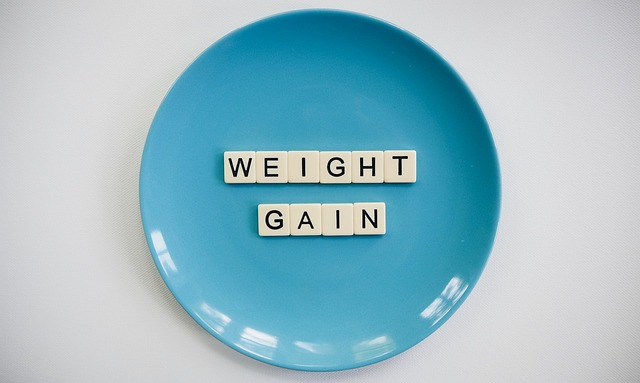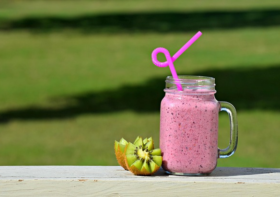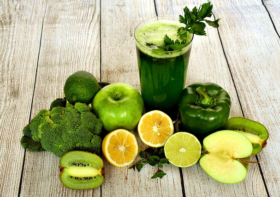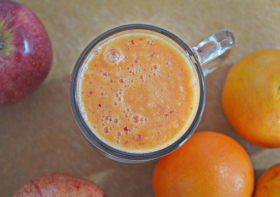Protein shakes for weight loss: Benefits and drawbacks

- Key Takeaways
- The Science of Protein Shakes
- Choosing Your Protein Shake
- Shakes vs. Whole Foods
- Strategic Shake Integration
- Potential Pitfalls
- Beyond Weight Loss
- Conclusion
- Frequently Asked Questions
- What are the benefits of protein shakes for weight loss?
- How do I choose the best protein shake for weight loss?
- Are protein shakes better than whole foods for weight loss?
- How many protein shakes can I have per day for weight loss?
- Can protein shakes cause side effects?
- Should I integrate protein shakes before or after exercise?
- Do protein shakes offer benefits beyond weight loss?
Key Takeaways
- Protein shakes can keep you satiated for hours, allowing you to tame your hunger and avoid binge eating on a well-rounded weight loss diet.
- Incorporating protein shakes post-workouts could increase your metabolic rate and keep muscle intact at the same time. This assists with fat loss and retention of strength.
- How to Choose a Weight Loss Protein Shake and what to watch out for When choosing a protein shake, the first thing to check is that it’s made with high-quality ingredients.
- Protein shakes are a supplement that is particularly convenient when you need a quick meal, but they shouldn’t replace real foods altogether.
- With some strategic timing, such as post-workout shakes or mixing in with other meals, you can get the most out of these shakes for weight management and recovery.
- Beware of sneaky sugars and tummy trouble in some shakes. Opt for a balanced diet that nurtures holistic health beyond the scale.
Weight loss protein shakes are drinks made with protein powder and other ingredients to help with weight management. Most people take them as a meal replacement or snack to curb hunger and reduce calories.
These shakes are flavored, but blend nicely with fruit or nuts and seeds for additional flavor. Others like them for being easy to throw together on hectic days.
Later, we’ll demonstrate how to select the proper shake for you.
The Science of Protein Shakes

Protein shakes initially made their name with athletes and bodybuilders. Now, they play a huge role in many weight loss journeys. Convenient, fast, and able to complement many health objectives, they are the perfect power booster for this busy time of year!
Protein shakes can curb your appetite, rev your metabolism, preserve muscle, and make calorie control easy. Their advantages and impact can vary based on a person’s health, age, and activity level.
1. Appetite Regulation
-
Protein shakes can combat hunger hormones, specifically ghrelin, which causes less cravings and snacking urges.
-
As a snack, a protein shake seems more satisfying than a sugary or fatty alternative, enabling you to resist the urge to eat too much before your next meal.
-
Thinking about the science of protein shakes. For instance, I’ve found that consuming a shake with a minimum of 20 grams of protein after breakfast tends to make my other meals smaller.
-
Listen to your own hunger. Others find they are less hungry after introducing protein shakes into their schedules. These impacts facilitate maintaining a weight loss diet over the long term.
2. Metabolism Boost
These protein shakes will increase your resting metabolic rate, so you burn more calories just sitting around. This is known as the thermic effect of food. Protein requires additional energy to digest relative to fats or carbs.
Protein shakes post-exercise can aid your body in recovery and burn more calories during the hours after working out. There are small differences from protein sources such as whey, soy, or pea, but most quality proteins provide a similar jump.
If you track your energy and metabolism after consistent use, you might observe minor yet significant shifts, particularly when combined with resistance training.
3. Muscle Preservation
While losing weight, you shed fat but you shed muscle. Protein shakes help preserve muscle, particularly when calories are reduced. A quality protein powder can help you meet daily needs, which for most adults is around 46 to 56 grams per day.
Timing matters, too. Consuming a shake close to your workout promotes muscle recovery and development. Shakes are a great way to balance them with real food to keep your diet diverse and to prevent the pounds from eating away at your muscles.
4. Calorie Control
Protein shakes can be meal replacements which make it much easier to manage calories. For example, if you want to lose weight, you need to know how many calories are in your shake. This keeps your eating regimented and promotes a calorie deficit.
Experimenting with new shake recipes can keep things fresh. By monitoring portion size and ingredients, you can ensure that you’re staying on target.
Choosing Your Protein Shake

Selecting your protein shake is crucial for achieving your daily protein target. The right shake helps you meet your protein goals, matches your diet, and leaves out the fillers you don’t want. With various protein options available, protein powders can be a significant component of your regimen, whether you’re vegan, lactose-intolerant, or simply searching for something that complements your lifestyle.
Protein Source
Protein shakes can be derived from multiple sources. Whey is a popular choice known for aiding muscles to recover and develop. It contains all the amino acids your body requires, but is not recommended for those who are lactose intolerant. Those individuals frequently bloat or cramp.
Plant-based options like pea, soy, rice, and hemp work better for many. Hemp protein contains all the essential amino acids and is gentle on most stomachs. Rice and pea protein are less allergenic, so it is a sure bet for sensitive users.
If you’re vegan, plant-based powders are a no brainer. For others, a mix of whey, casein, or plant sources could be more versatile. Some shakes even blend these to provide consistent protein delivery.
When you’re thinking weight loss, research indicates whey and soy could be slightly better at controlling hunger, but any high-quality protein can create an impact. Just always make sure the brand was third-party tested. This adds peace of mind about what’s in your shake.
|
Protein Source |
Features |
Price (per 1kg) |
Pros |
Cons |
|---|---|---|---|---|
|
Whey |
Milk-based, fast digesting |
$20-30 |
Complete amino acids, muscle support |
Not for lactose intolerant |
|
Pea |
Plant-based, low allergen |
$25-35 |
Good for sensitive stomachs, vegan |
Slightly less leucine |
|
Soy |
Plant-based, complete |
$18-28 |
Full amino profile, budget-friendly |
Allergen for some |
|
Hemp |
Plant-based, all amino acids |
$30-40 |
Easy to digest, less allergenic |
Lower protein per serving |
|
Rice |
Plant-based, hypoallergenic |
$22-32 |
Gentle on stomach, vegan |
Lacks some amino acids |
|
Mixed |
Combo of protein types |
$25-38 |
Balanced release, versatile |
May contain allergens |
Ingredient List
Choosing your protein shake. Good protein shakes keep the ingredients simple and transparent. A few brands might add extra sugar or artificial flavors or chemical thickeners. These will hinder your progress or irritate your stomach.
Seek a short ingredient list—protein, perhaps some natural sweetener, not a lot else. Beware of words like “maltodextrin” or “sucralose,” which usually translate to over-processing.
A checklist helps when picking:
- Protein source you tolerate
- No added sugar
- No artificial colors or flavors
- Third-party tested for safety
- Short, clear ingredient list
Just simple, real ingredients that make shakes easier to trust and easier to use every day.
Nutritional Profile
See how much protein is in each serving. Most healthy adults require 45 to 56 grams per day or 0.6 grams per pound of body weight. If you’re older, you may need a bit more. Protein shakes can get you there if you’re busy or eat little meat.
Keep an eye on the carb and fat balance as well. Certain shakes will have added vitamins and minerals, which is a plus. Others may be missing them, so review the nutrition label.
A quality shake will provide a minimum of 20 grams of protein, under 5 grams of sugar, and a blend of nutrients to keep your body functioning optimally.
|
Shake Brand |
Protein (g) |
Carbs (g) |
Fat (g) |
Sugar (g) |
Notable Micronutrients |
|---|---|---|---|---|---|
|
Brand A |
25 |
8 |
2 |
1 |
Calcium, Iron, B12 |
|
Brand B |
20 |
5 |
1 |
0 |
Magnesium, Potassium |
|
Brand C |
22 |
10 |
3 |
4 |
Vitamin D, Zinc |
Shakes vs. Whole Foods

When comparing shakes to whole foods, it’s about more than just the protein content. Whole foods such as beans, eggs, lean meats, tofu, and lentils provide not only protein but also fiber, vitamins, and minerals that encourage sustainable weight loss. Fiber in whole foods digests slowly and helps regulate appetite and satiety, making them a crucial part of a solid weight loss plan.
When you chew, your body receives signals that allow you to stop eating when you’re full, which is a crucial piece of weight management that shakes cannot duplicate. Protein shakes, however, are easy to sip and easy to consume quickly, but they don’t go very far in helping you feel satiated. They are designed to be digested quickly, so you’ll be hungry again soon. This can make it more difficult to maintain a weight loss regimen.
However, protein shakes do have their place. For those with packed work schedules, constant travel, or dietary restrictions, protein supplementation through shakes serves as an acceptable stand-in. If you’re busy or can’t cook, a shake can be a convenient option to grab on the go.
Let’s not replace real food with shakes too much. Relying too heavily on protein powders can lead you to miss out on the health benefits of whole foods, such as fiber, healthy fats, and other nutrients your body craves.
Protein shakes can fill a gap in your diet in a few common situations:
- Your life is hectic and you need something to eat quickly.
- You’re on the road and don’t have access to your regular foods.
- You’re plant-based and need more protein.
- You’re post-workout and need something fast.
- You don’t have an appetite and just need a convenient way to get extra protein.
Whole food meals involve shopping, chopping, cooking, and cleaning up, which can be time-consuming. However, preparing and consuming real food can assist you in developing better habits and feeling more connected to your diet. The time invested is often worth it for the satiation and the variety of nutrients you receive, contributing to your daily protein target.
Whole food meals are slower, involving shopping, chopping, cooking, and cleaning up. Preparing and consuming real food can assist you in developing better habits and feeling more connected to your diet. The time is frequently worth it for the satiation and the variety of nutrients you receive.
Strategic Shake Integration
When adding protein shakes to your weight loss plan, it works best when you consider the timing and manner with which you use them. Most of us resort to shakes for their convenience and protein-rich punch. The real magic happens when you strategically integrate them into your daily routine and combine them with other intelligent eating behaviors.
Studies demonstrate that high-protein diets, roughly 1.2 to 1.6 grams of protein per kilo of body weight per day, aid in fat loss, preserve lean muscle, and manage hunger. That said, everyone’s needs are a little different and performance can be dependent on factors such as age, lifestyle, and even when you consume your shake.
Meal Timing
It’s all about timing when it comes to shakes and weight loss. There’s a good reason why gulping down a shake immediately post-workout assists your body in recovering and muscle building, particularly when you engage in resistance training. Others swear that a high-protein shake in the morning keeps them satiated until lunch, aiding calorie control.
Others opt for a shake in the evening, particularly if dinner is their lightest meal or they require something fast after a late workout. Experiment with the timing of your shakes and how you feel. You may find that a post-workout shake pumps you up or a morning shake staves off mid-morning cravings.
Since everyone’s cadence is different, a little trial and error is deserved.
Diet Synergy
Taking shakes in conjunction with other smart eating habits makes a larger difference. For instance, incorporating shakes into a well-rounded meal, perhaps with whole grains, nuts or a salad, can enable you to reach your nutritional targets without deprivation. Nuts and seeds, for example, provide only 5 to 7 grams of protein per 28 grams and can both enhance your shake or be consumed with it.
Studies suggest better outcomes when you combine shakes with other tactics, such as intermittent calorie fasting or daily cardio. Mixing up these methods can result in more fat loss and better muscle preservation. Be strategic about shake integration.
This is where it gets interesting – look at your entire diet and how shakes fit in, not just depend on them. Strategic Shake Integration – sometimes exchanging a strategically placed shake for a meal can help you keep calories in check while still maintaining your protein intake. Monitor your total intake so you don’t skip out on key nutrients from other foods.
Homemade Recipes
Making your own shakes allows you to control the ingredients and mix it up. Fruit, plain nut butters, and your favorite protein powder can mix up flavor and nutrition. Test oats for fiber or yogurt for a creamier mix. Mixing in seeds like chia or flax adds protein and healthy fats.
- Mango, Greek yogurt, chia seeds, and vanilla protein powder
- Spinach, banana, almond butter, and chocolate protein powder
- Blueberries, oats, flax seeds, and vegan protein mix.
Spread the love, share your best homemade shakes with friends or family! Nothing like sharing recipes to inspire others and add a little excitement to healthful cuisine.
Potential Pitfalls
Protein shakes offer a convenient way to increase your protein intake, especially when utilizing quality whey protein or plant protein options. However, they can present dangers in the context of a weight loss journey, as certain protein powders may contribute to excess calories and hinder your weight loss goals.
Over-Reliance
Relying on protein shakes day after day might feel simple, but it can backfire. Whole foods provide far more than just protein; they offer fiber, vitamins, minerals, and healthy fats, all of which are usually lacking in the majority of protein shake recipes. Imagine a diet consisting solely of shakes. It’s like re-reading chapter one over and over. You overlook the forest for the trees.
If shakes begin to replace meals made up of real fruits, grains, veggies, and nuts, holes in your nutrition can creep in. The majority of nutritionists recommend one shake per day, two at most, especially if you’re active and having difficulty meeting your daily protein target. Even elite athletes don’t subsist on shakes alone.
It aids in checking in with yourself. Are you missing lunch for a shake daily? Are you less satisfied? If so, it’s time to reintroduce more whole food meals.
Hidden Sugars
Not all protein shakes are as healthy as they appear. Many brands add sugars or syrup to increase flavor, which inflates calories quickly and can stall weight loss. A few powders even hide their sugar behind names like “maltodextrin” or “fructose.
A chocolate shake might contain as much as 25 grams of sugar per serving. That’s almost the equivalent of six teaspoons. Choosing unsweetened or low sugar powders, for example, will assist, but as always, read the label.
Natural sweeteners, such as stevia or monk fruit, are great options if you desire flavor without sweetness. Even these, as with all favorites, should be savored in moderation and not employed to disguise an otherwise lousy diet.
Digestive Issues
New protein powder could give some people tummy troubles. Whey protein is notorious for inducing gassiness, bloating or cramps, particularly in lactose-intolerant people. There are plant options, but soy, pea or rice proteins can wreak havoc on sensitive stomachs.
Selecting a protein source that’s easier to digest, such as hydrolyzed whey or brown rice, can minimize these issues. Including fiber from chia seeds or oats can assist in maintaining regularity and nurturing gut health.
If stomach issues persist, a consultation with a nutritionist is reasonable. The issue isn’t the protein as much as how much or how quickly you’re sipping it. The majority of individuals utilize protein optimally when they distribute it and consume moderate portions at each meal.
Balanced Diet Awareness
It’s simple to get locked in the math—grams of protein, calories slashed, or shakes on shakes on shakes. Obsessing over a single facet of your nutrition may make you blind to everything else. High protein diets, particularly from animals, can alter your gut bacteria and in some situations, add strain to your kidneys. This is even more dangerous for individuals who already have kidney problems.
Not one food or shake can rule them all. Throwing in a large variety of whole foods gives you the best chance at sustainable health and weight loss. What we don’t know about long-term protein powder use makes it wise to err on the side of a balanced approach.
Beyond Weight Loss

Protein shakes can do more than just help you shred pounds. They deliver a host of other health benefits that impact numerous areas of life, rendering them useful for individuals with all kinds of needs and objectives. For individuals who can’t consistently consume sufficient protein through their meals—consider busy individuals, seniors, or people following vegetarian or vegan lifestyles—protein supplementation can bridge the deficiency.
A basic shake with quality whey protein or plant-based protein powder, such as pea or soy, aids you in fulfilling your daily requirements. Tofu is another good option, full of protein, iron, and copper, so you’re getting more than just muscle food.
Your muscles require protein post-workout in order to repair and grow. A satisfying protein shake immediately post-workout can accelerate this process. That’s the case for both novice gym rats and professional athletes. It’s not just about looking buff; maintaining lean muscle mass is important for health and actually torches more calories even when you’re sitting down.
Research indicates that consuming 25 to 30 grams of protein per meal assists with weight loss and maintenance. This type of consistent protein consumption is associated with reduced muscle loss when shedding pounds and may even assist in preventing its return. As one 2020 review notes, people consuming more protein post-weight loss maintain it longer.
Protein shakes can assist to upgrade your nutrition. Most people struggle to eat sufficient protein each day, particularly if they steer clear of animal products. Tossing in a shake here or there once or twice a day can help get you to those goals.
It does more than that; it helps with satiety. Research from 2016 demonstrates that the more protein you eat, the less hungry you will be, so you may end up snacking or craving less. This can make controlling your eating and weight more manageable, without feeling like you are sacrificing too much.
In the long run, protein shakes were part of a healthy lifestyle. They stabilize blood sugar, which is essential for long-term health. Others connect greater protein diets to better blood sugar and insulin sensitivity, so shakes could help keep energy levels through the afternoon.
The convenience of a shake, quick to make and easy to take on the go, means less missed meals and more opportunities to maintain good habits!
Conclusion
Protein shakes provide convenient weight loss assistance. They’re a time saver and slot into hectic days. Many people choose them for their combination of flavor and convenience. Some people get quick wins with shakes, while others mix them with meals for gradual weight targets. One friend replaced her afternoon snack with a shake and noticed her jeans sitting looser within weeks. Another combined shakes with a light lunch and was less hungry in the evenings. Shakes work best when you understand your requirements and pay attention to your body. Experiment a little, observe how you feel, and select what suits your lifestyle. Or share your shake stories and tips with others. Your journey might be the jump-start another needs.
Frequently Asked Questions
What are the benefits of protein shakes for weight loss?
Protein shakes, especially those with quality whey protein, help control hunger and support muscle maintenance. They’re convenient and can slot into a high protein diet, making them ideal for individuals looking to shed pounds healthfully.
How do I choose the best protein shake for weight loss?
Find satisfying protein shake recipes with low sugar and minimal additives. Opt for those containing 15 to 25 grams of quality whey protein per serving, ensuring it aligns with your daily protein target and dietary considerations.
Are protein shakes better than whole foods for weight loss?
Whole foods have more vitamins, fiber, and essential nutrients. About: weight loss protein shakes. Use protein shake recipes to supplement, not replace good nutrition.
How many protein shakes can I have per day for weight loss?
Generally, everyone can drink protein shakes once a day for a meal or snack, but it’s crucial to balance these with whole foods. Relying solely on certain protein powders can create nutrient gaps, so adhere to the serving suggestions.
Can protein shakes cause side effects?
Others might encounter bloating, digestive issues, or allergies, particularly from certain protein powders like dairy shakes. Go plant-based with options like organic pea protein if you have sensitivities. Always check ingredient lists for allergens!
Should I integrate protein shakes before or after exercise?
Drinking protein shakes before and after workouts is essential; a satisfying protein shake post-exercise assists muscle recovery and meets your daily protein target.
Do protein shakes offer benefits beyond weight loss?
Yes, protein shakes can facilitate muscle growth, enhance recovery, and satisfy daily protein targets, making them ideal for those on a high protein diet.



Leave a Reply